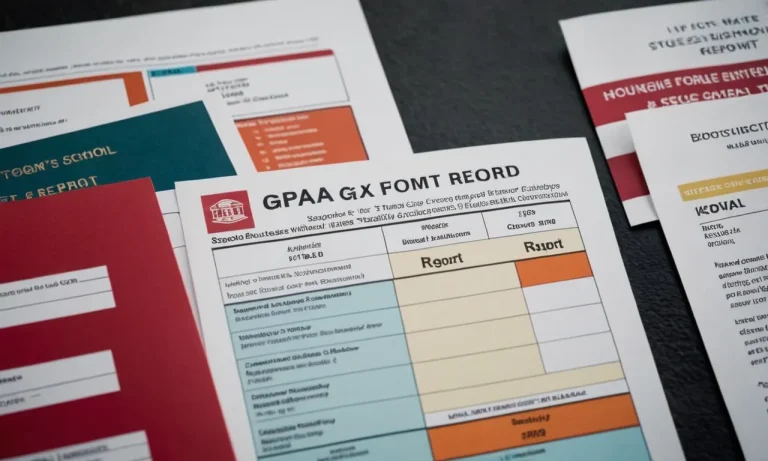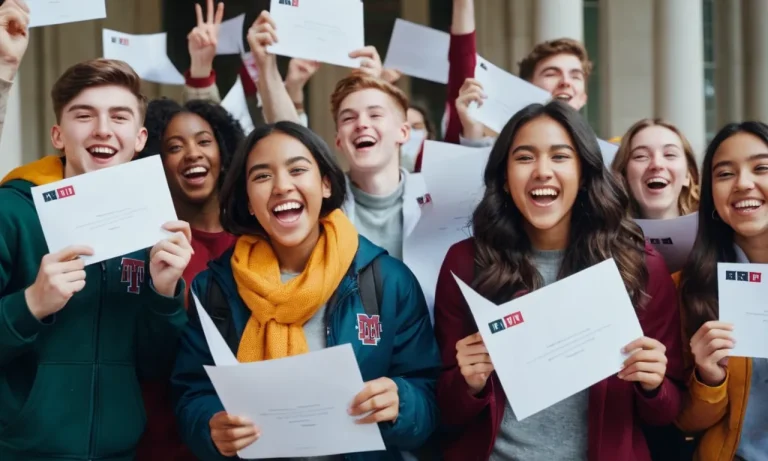Dreading the thought of sweating it out in gym class? Don’t worry, you’re not alone. Many high school students find themselves in a predicament when it comes to physical education (PE) classes. Whether it’s due to medical reasons, personal preferences, or scheduling conflicts, the desire to opt out of PE is a common one.
If you’re short on time, here’s a quick answer to your question: To get out of taking PE in high school, you may need to provide a valid medical excuse, explore alternative options like online courses or independent study, or seek exemptions based on your school’s policies and your specific circumstances.
In this comprehensive guide, we’ll delve into the various strategies and steps you can take to potentially get exempted from PE classes in high school. From understanding the requirements and regulations to navigating the process effectively, we’ve got you covered.
Understanding Your School’s PE Requirements
Before embarking on your quest to get out of taking PE in high school, it’s crucial to have a solid understanding of the requirements set by your state, school district, and individual school. This knowledge will serve as the foundation for your strategy and ensure that you navigate the process smoothly.
💡
Familiarize yourself with the state and district policies
Each state has its own set of regulations regarding physical education (PE) requirements for high school students. For example, according to the Shape of the Nation report by SHAPE America, as of 2016, only six states (Illinois, Hawaii, Massachusetts, Mississippi, New Mexico, and Vermont) required students to take PE every year from kindergarten through 12th grade.
It’s essential to research your state’s specific policies and understand how they translate to your school district’s guidelines.
Identify the specific PE credits required for graduation
Most high schools require a certain number of PE credits for graduation. This information can typically be found in your school’s course catalog or on the website. For instance, a common requirement is two years (four semesters) of PE classes.
However, the exact number of credits may vary, so it’s crucial to know the specific requirements for your school. 😉
Determine if exemptions or alternative options are available
Many schools offer exemptions or alternative options for students who wish to opt out of traditional PE classes. These may include:
- Substituting participation in school-sponsored sports or extracurricular activities
- Taking online or independent study PE courses
- Obtaining a medical exemption for physical limitations or disabilities
- Completing community service or work-study programs related to physical fitness
It’s essential to explore these options and understand the criteria for qualifying. Some schools may require documentation or approval from administrators or medical professionals. 🙌
By thoroughly understanding your school’s PE requirements and exploring potential exemptions or alternatives, you’ll be better equipped to navigate the process and make an informed decision about how to approach this aspect of your high school education.
Remember, staying informed and proactive is key to achieving your goals! 💯
Seeking a Medical Exemption
If you’re struggling with a physical or mental health condition that makes participating in physical education (PE) classes challenging or even detrimental to your well-being, seeking a medical exemption can be a viable option.
However, it’s essential to follow the proper procedures and provide sufficient documentation to support your request.
Obtain a doctor’s note or medical documentation
The first and most crucial step is to obtain a comprehensive medical report or doctor’s note from a licensed healthcare professional. This document should clearly outline your condition, its impact on your ability to participate in physical activities, and the specific limitations or accommodations you may require.
According to the Centers for Disease Control and Prevention (CDC), approximately 15% of students in the United States have a chronic health condition that could potentially warrant a PE exemption or modification.
Explain your condition and limitations
Once you have the necessary medical documentation, it’s essential to clearly explain your condition and its impact on your ability to participate in PE classes. Be specific about the types of physical activities that may exacerbate your symptoms or pose a risk to your health.
For instance, if you have asthma, you might struggle with high-intensity cardio exercises or activities that involve prolonged exertion. If you have a musculoskeletal condition, certain movements or weight-bearing exercises could be problematic.
Providing this level of detail will help school administrators understand your unique needs and make informed decisions regarding your exemption request.
Provide supporting evidence and follow the proper procedures
In addition to the medical documentation and explanations, it’s crucial to provide any other supporting evidence that may strengthen your case. This could include records of previous accommodations or modifications made in PE classes, letters from therapists or specialists involved in your care, or documentation of any incidents or challenges you’ve faced during physical activities.
It’s also essential to follow the proper procedures outlined by your school or district, which may involve submitting forms, attending meetings, or adhering to specific timelines. By being thorough and following the established protocols, you increase your chances of having your exemption request approved.
Remember, seeking a medical exemption from PE classes is a legitimate option for students with genuine health concerns or limitations. By working closely with your healthcare providers and school administrators, and providing comprehensive documentation and evidence, you can advocate for your well-being while still pursuing your educational goals.
Don’t hesitate to seek assistance or clarification from school counselors, disability services offices, or advocacy organizations if needed. Your health and safety should always be the top priority.
Exploring Alternative PE Options
If the traditional physical education (PE) class isn’t your cup of tea, don’t worry – there are alternative options available to help you meet the requirements for graduation. Not everyone thrives in a standard gym class setting, and that’s perfectly okay! 💪🏻 Let’s explore some of the possibilities:
Online PE courses or independent study programs
Many schools now offer online PE courses or independent study programs, allowing you to complete your PE credits from the comfort of your own home (or wherever you prefer!). These virtual options provide flexibility and cater to diverse learning styles.
Websites like PECentral and OpenPhysEd offer a wealth of resources and accredited online courses that can be a great fit for students seeking an alternative to traditional PE classes.
Substituting PE with approved extracurricular activities
If you’re involved in sports, dance, or other physical activities outside of school, you may be able to substitute those for PE credits. Many schools recognize the physical demands and benefits of extracurricular activities and allow students to earn PE credits through participation.
🏆 According to a position statement from SHAPE America (Society of Health and Physical Educators), approximately 28 states allow PE credit substitutions for extracurricular activities. However, policies can vary widely between districts and states, so it’s essential to check with your school’s administration for specific guidelines.
Participating in school-approved physical activities outside of class
Some schools offer alternative physical activities that can count towards PE credits, such as weightlifting, yoga, or even walking clubs. These options provide a more specialized focus and may better align with your interests and fitness goals.
🧘♀️ For example, the Miami Country Day School offers a variety of wellness electives, including yoga, strength training, and mindfulness practices, as alternatives to traditional PE classes.
Remember, the key is to find an option that not only meets the requirements but also keeps you engaged and motivated to stay active. Don’t be afraid to explore different paths and advocate for yourself – your physical and mental well-being should be the top priority.
With a little creativity and persistence, you can absolutely crush those PE credits in a way that works best for you! 🎉
Navigating the Exemption Process
Getting an exemption from taking physical education (PE) classes in high school can be a challenging process, but with the right approach, it’s certainly achievable. The key is to follow the proper procedures and provide compelling evidence to support your request.
Here’s a comprehensive guide to help you navigate the exemption process:
Submit a formal request or application
The first step is to submit a formal request or application to the appropriate authorities, typically the school administration or the physical education department. This request should clearly state your reasons for seeking an exemption, whether it’s due to a medical condition, religious beliefs, or other valid grounds.
According to a survey by the National Association for Sport and Physical Education, over 60% of high schools have a formal exemption process in place.
Gather supporting documentation and evidence
To strengthen your case, you’ll need to gather relevant supporting documentation and evidence. This may include medical records, doctor’s notes, religious texts or statements from religious leaders, or any other documentation that backs up your reasons for seeking an exemption.
The Society of Health and Physical Educators (SHAPE America) recommends providing detailed and up-to-date information to support your request.
Attend meetings or hearings, if required
Depending on the school’s policies, you may be required to attend meetings or hearings to present your case in person. This can be an opportunity to further explain your situation and address any concerns or questions from the decision-makers.
😊 Prepare thoroughly, be articulate, and remain respectful throughout the process.
- Tip: Practice your presentation beforehand and anticipate potential questions or objections.
- Bring a supportive parent, guardian, or advocate to accompany you if allowed.
Follow up and appeal, if necessary
If your initial request for an exemption is denied, don’t give up! Many schools have an appeals process in place, so be sure to follow up and appeal the decision if you believe your case has merit. According to a study by the National Center for Education Statistics, around 15% of exemption requests are initially denied but later approved on appeal. Provide any additional supporting evidence or clarification that may strengthen your case during the appeals process.
Remember, the exemption process can be lengthy and may require persistence on your part. However, by following the proper channels, providing compelling evidence, and advocating for yourself respectfully, you can increase your chances of success.
Don’t hesitate to seek guidance from school counselors, administrators, or trusted advisors throughout the process. 👏
Conclusion
Getting out of taking PE in high school may seem like a daunting task, but with the right approach and understanding of the process, it’s certainly achievable. By familiarizing yourself with your school’s policies, exploring alternative options, and following the proper procedures, you can increase your chances of securing an exemption or finding a suitable solution.
Remember, each school district and state may have different regulations, so it’s crucial to do your research and follow the specific guidelines. Additionally, be prepared to provide valid reasons and supporting documentation to strengthen your case.
Ultimately, the key is to be proactive, persistent, and open to exploring various avenues. With determination and a well-informed approach, you can navigate the process successfully and potentially get out of taking PE in high school.






